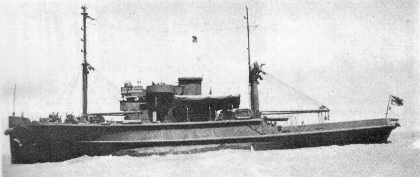
Built in 1942, by the Besalt Rock Company of Napa, California (hull #40) as the BARS-2 for the United States Maritime Commission.
Her keel was laid down on February 21st, 1942. She was launched on September 7th, 1942 and assigned to the Royal Navy on May 20th, 1943 under terms of the Lend Least Act. Where she was renamed as the Cambrian Salvor (0361).
She was officially placed into service under the Royal Navy on July 1st, 1943. Where she was assigned to the Commonwealth Salvage Board as a salvage and repair ship in Papa, New Guinea.
On September 2nd, 1945, she was turned over to the Australian Navy, under a Lend Lease agreement. However on August 5th, 1948 she was sold to the Australian Navy. Her title was transferred October 12th, 1948. It is unknown when she was placed out of service by the Australian Navy.
In 1958, the tug was sold for merchant service. Where she was acquired by Island Tug and Barge Limited of Vancouver, British Columbia, Canada. A subsidiary of McAllister Towing of New York, New York branded as McAllister Towing Limited of Montreal. Where the tug was renamed as the Cambrian Salvor.
In 1962, she was sold and renamed as the Caribische Zee.
In 1963, the tug was sold and renamed as the Collinsea.
In 1971, she was sold and renamed as the Francois C.
In 1981, the tug was sold and renamed as the Ras Deira.
In 1981, the tug was scrapped.
Powered by two, Cooper Bessemerr, diesel electric engines. With Fairbanks Morse main reduction gears, turning two, fixed pitch propellers. She was a twin screw tug, rated at 3,000 horsepower.
Her electrical service was provided by two, diesel driven 200kW/120V DC generator sets, and one diesel driven 60Kw/120V DC generator set.
(NavSource Online, H.T. Lenton, J. J. Colledge, Robert Hurst)